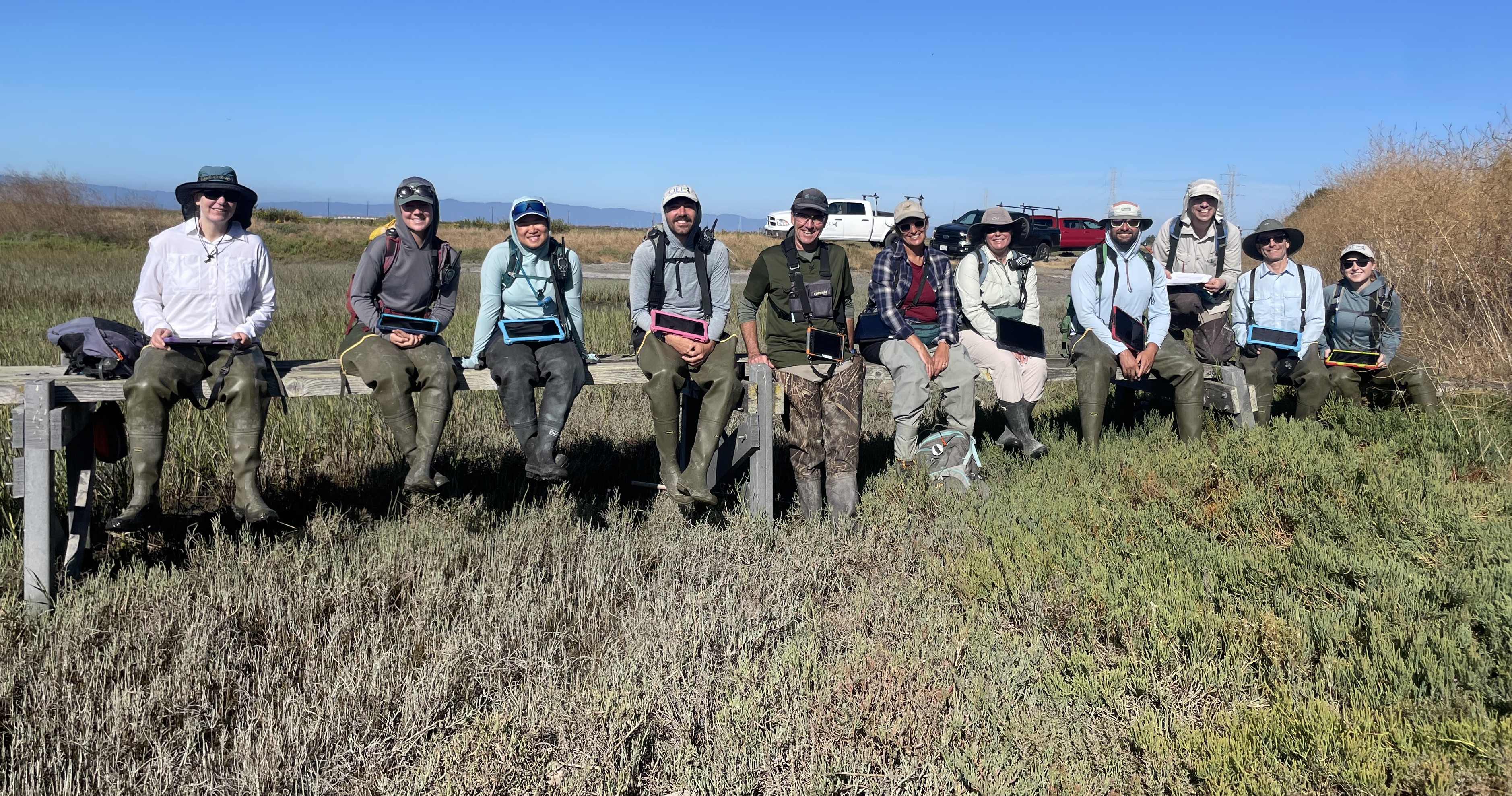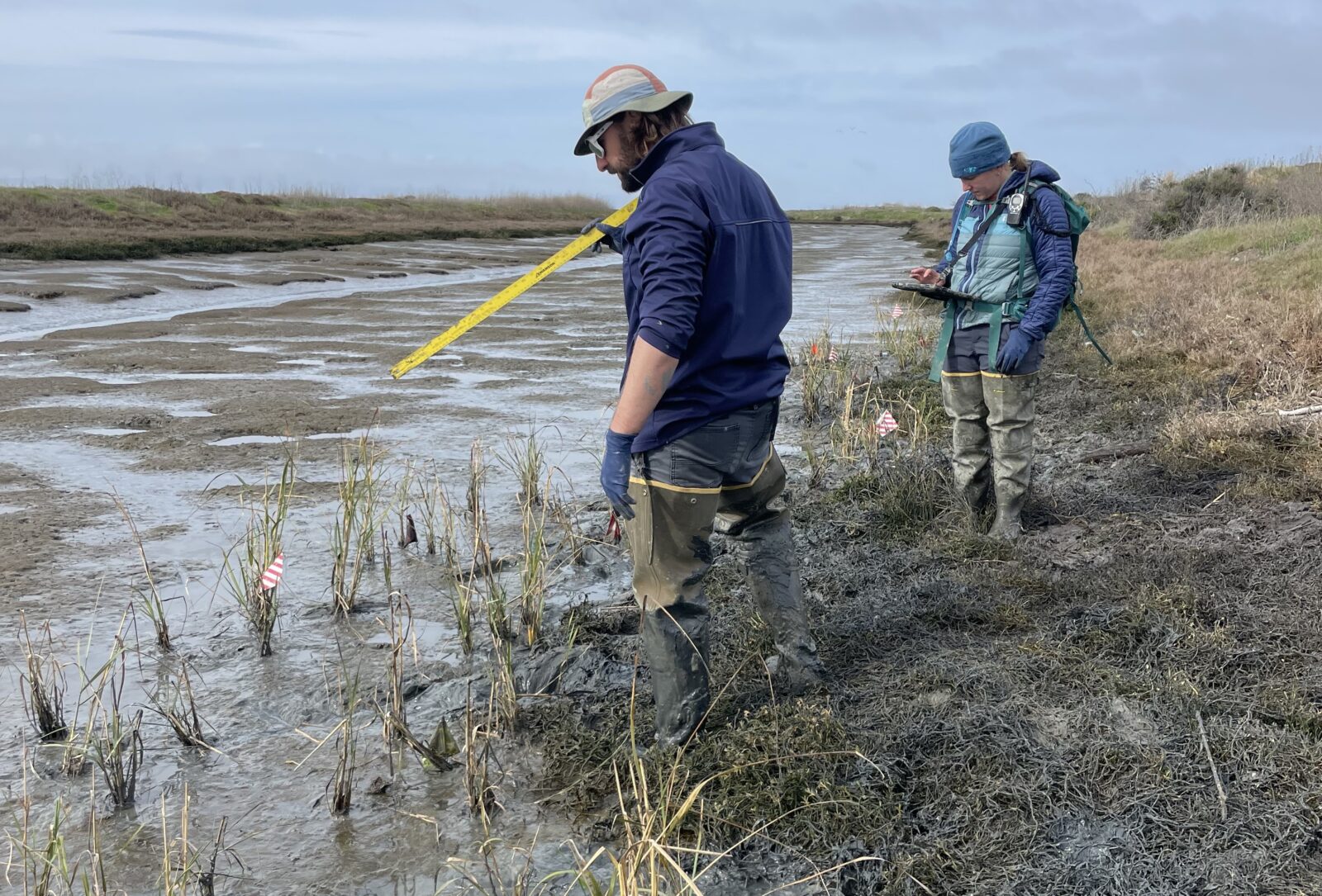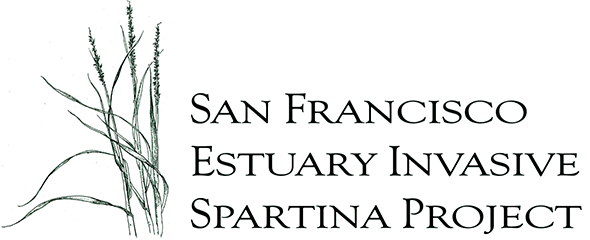
Gearing up for treatment at North Marsh in San Leandro
The 2025 invasive Spartina treatment season is underway! Continuing a systematic phased approach for addressing heavily infested sites where access was previously restricted, this year the team will take on North Marsh in San Leandro, the largest remaining invasive Spartina infestation in San Francisco Bay with a 60-acre treatment area. ISP has hired 15 seasonal biologists and field techs to boost staffing during the busy monitoring and treatment season. Seasonals are trained to map and treat invasive Spartina, and to monitor and map restoration plantings. The ISP ramped up the number of seasonals this year, both to increase capacity on the ground and to extend this workforce development opportunity to more early career workers eager to gain field skills in invasive species management and habitat restoration.

Restoration plantings take hold
Over the winter, more than 18,000 native plants were installed in tidal marsh habitats, including marsh-upland transition zones, at eight marshes in central and south San Francisco Bay. To help with plant establishment in the marsh-upland transition zones where annual weeds are prevalent, the restoration team watered and weeded around the plantings through June. This fall, the ISP will revisit previous plantings to track their persistence and continued growth.

CA Ridgway’s rail numbers hold steady
The 2025 call count surveys for CA Ridgway’s rail have wrapped up. At sites where Spartina has been treated without interruption, overall numbers increased to 916 rails observed during this season’s surveys, up 25% from 2022 surveys. Including the more recently treated sites where treatment had been slowed to protect rail, the total is 1,137 rails in 2025, up 23% from 2022 surveys. Areas where significant hybrid Spartina treatment was re-initiated starting in 2018 have begun showing increased numbers of rails as the native marshes rebound.
Coordination with EBRPD restoration projects
The East Bay Regional Park District is planning many restoration projects, including the Restore Hayward Marsh Project and the North Basin Strip Shoreline Park Improvement Project. The district and its consultants conferred with the ISP to confirm the status of cordgrass at these sites, which includes invasive Spartina still being treated near Hayward and native Spartina foliosa mapped in recent years at the Berkeley shoreline. ISP and Coastal Conservancy staff provide input on design components, site history, data, and maps regarding invasive Spartina and will coordinate with EBRPD to minimize any unintentional spread of invasive Spartina through restoration projects. This is a good example of project partners coordinating with the ISP to ensure successful design planning and native tidal marsh restoration outcomes. If you are planning a project along the Bay shore, please reach out to coordinate with us at info@spartina.org.
Working on the Bay shore? Be in touch with the ISP!
As mentioned above, it is critical that ISP knows about any work along the Bay shore or on waterways feeding into the Bay. Invasive Spartina could impact your project, and your project could impact the spread of invasive Spartina. If you are managing existing restoration sites or planning future restoration or sea level rise adaptation projects, ISP wants to hear from you! Please get in touch with the ISP team by emailing info@spartina.org. Thanks!
Thank you to ISP partners
This work could not happen without the wide range of collaborating organizations and dedicated staff and contractors dedicated to its success, including: the State Coastal Conservancy, US Fish and Wildlife Service, San Francisco Bay Restoration Authority, East Bay Regional Park District, California Dept. of Fish and Wildlife, Port of Oakland, San Francisco Bay Joint Venture, California Invasive Plant Council, Olofson Environmental, Inc., Valley Water, Corte Madera Creek Watershed Council, and more than 150 landowners, agencies, organizations and contractors. Together, we are working to protect the Bay’s shorelines, bolster native green infrastructure, improve biodiversity, and help increase regional resilience to climate change.
